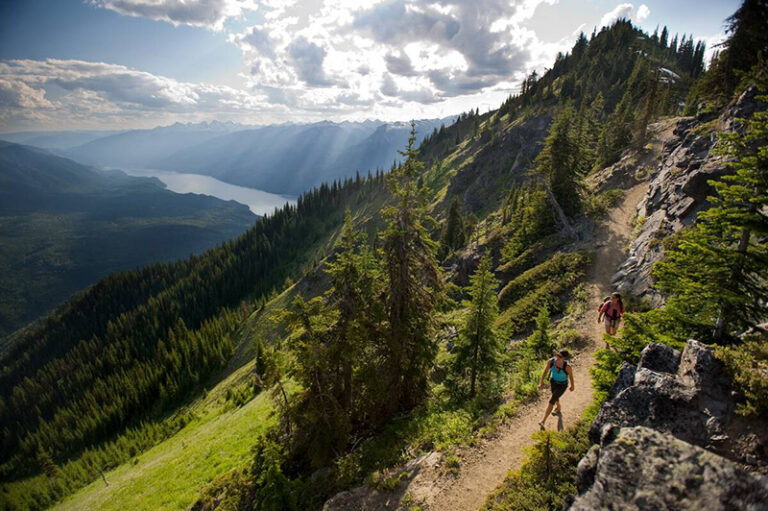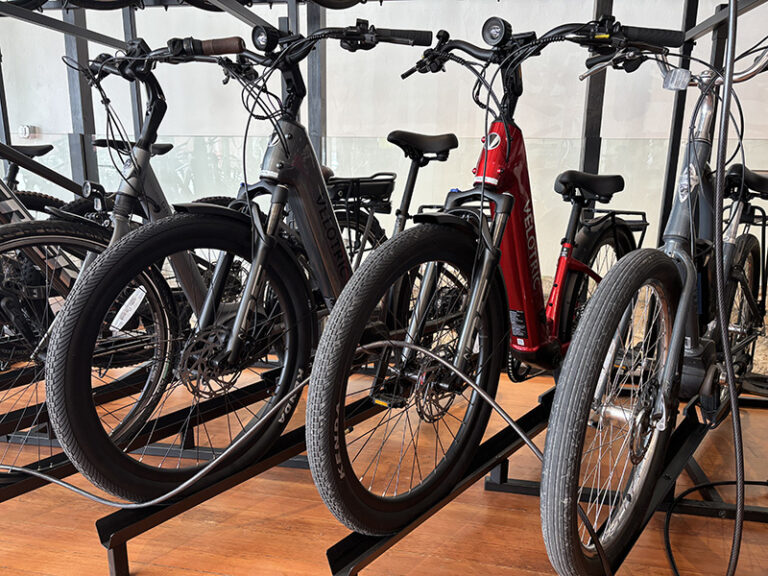Recently, I found myself pondering the ways that our river brings us the value we have come to love and even expect. We all get the wet part of the river. Clean water supports fish to chase, cool water to jump and swim in, and rapids to paddle and play on, but the river gives us much more. I am talking about the river as a corridor for travel and communion. Let me explain.
My co-worker and I have a standing joke about the trails we see (and use) along rivers. I call them mountain bike trails and he calls them fly fishing trails. But in reality, they could be called dog walking trails, trail-running trails or even moose, mule deer or coyote trails. In fact, our Spokane River is braided with travel routes within earshot of running water that are used by everything from otters to park rangers. These routes provide value and connection to the river. And they exist because the shorelines themselves exist. People seek out the shores and banks of our rivers and use the flow of geography the same way the water does as it runs from Idaho to the Columbia River.
Sometimes I feel like I can almost see into the thousands of years that native people travelled these shores in search of salmon. Today, our shores are no less important. The Apple Program’s annual Spokane River Run would not be the same without our river’s shorelines, nor would the Centennial Trail or even Bloomsday, which trace the river’s geography. We can see moose in the West Central neighbourhood and osprey nesting in the snags near Kendall Yards all because of our shorelines.
What’s more, we are blessed with shoreline access from Coeur d’Alene to Long Lake. From Spokane Valley through the city and down the canyons of Riverside State Park, our shorelines provide a beautiful flow of people and wildlife. They support important species of creatures that are “bridges” to the underwater world of the river itself. As such, we have important shoreline Master Plans to preserve the functions of the natural world and the public quality of life in these areas.
But we have a great deal of work to do to ensure that the quality of this expanded definition of river flow is recognized by all, preserved, managed and enhanced. It is time to re-envision the river itself as extending up the banks and into our communities. We need to continue developing ecologically sustainable boater access points and routes, the siblings to our terrestrial trail systems. We should preserve and protect the critical community value in the shoreline trails and maintain them so that the trees and shrubs are not damaged and erosion is controlled. We should carefully plan development so that it never impairs the much greater collective, community value that we gain from the continuous, uninterrupted flow of access and connection to our beautiful river.
This human and natural flow is a heritage that is thousands of years old. So next time you get the chance, head down to the river and enjoy one of the many mountain biker, fly fisher, dog-walker, trail runner, Frisbee golfer, moose, mule deer, coyote, and/or otter trails. And when you do, stop and listen to the king fisher in the willow at the edge of the river. She is there for the same reason you are: to enjoy the flow of energy that is only possible because of continuous, intact shorelines that are inseparable from our river.
Jerry White Jr. learned to fly fish at a young age and has been exploring Northwest rivers by boat and on foot ever since. In 2014, he signed on as the Spokane Riverkeeper, turning his lifelong passion for our local river into a full-time job.













